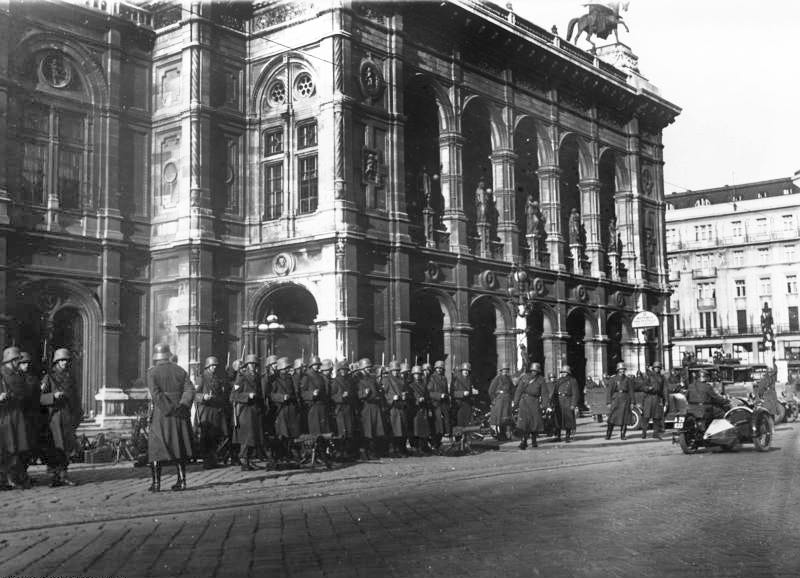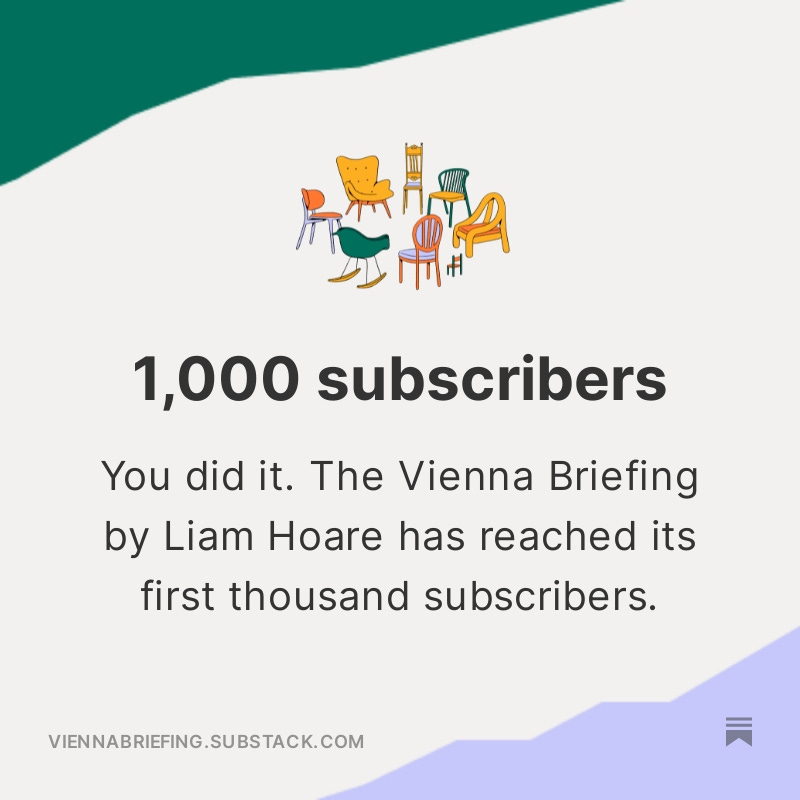Civil War
How the tumultuous history of the First Republic ended in open warfare between Austria's two main political camps and the death of Austrian democracy

Servus!
On this day 90 years ago, Austria was experiencing the final hours of a brief but decisive civil war. The events of February 12-15, 1934 were the bloody culmination of a tumultuous political struggle between Austria’s two main political camps that had defined the First Republic and the pretext for the final demise of Austrian democracy and the country’s slide into fascism.
Born on November 12, 1918 in the twilight of the First World War, the Austrian republic was a rump state nobody wanted. Its politics became deeply divided, pitting Austria’s socialists, represented by the Social Democratic Workers' Party (SDAPÖ), against its Catholic conservatives, whose parliamentary vehicle was the Christian Social Party (CSP). This was not only a struggle of ideas—including over the existential question of whether Austria should exist as an independent state or not—but also a class struggle and an expression of Austria’s urban-rural divide.
A current of violence ran through the First Republic’s political culture. At its declaration, its birth slap, two people died and 40 more were wounded when Austrian communists tried to storm parliament’s ramparts. In the Catholic conservative camp, 50,000 demobilized soldiers formed paramilitary units, the Heimwehr, modeled on the German Freikorps. In response, the SDAPÖ established its own paramilitary, the Republikanischer Schutzbund, with 80,000 members. The state thus lost its monopoly on the use of force, and as Austria’s political and economic climate deteriorated during the 1920s, clashes between the two camps become more frequent.
At the same time, the politics of the Catholic conservative camp became evermore authoritarian. On March 4, 1933, chancellor Engelbert Dollfuss dissolved parliament and began to rule by decree. In May, he formed the Fatherland Front—uniting the CSP with the Heimwehr paramilitaries under the banner of a single movement—and banned the Communist Party (KPÖ), the Nazi Party (DNSAP)1, and the socialist Republikanischer Schutzbund, which became subject to regular raids by the authorities. Parliamentary democracy was de facto abolished, and the Dollfuss regime began to restrict civil liberties including the right to assembly. The SDAPÖ’s attempts to negotiate with Dollfuss came to nothing. On February 12, 1934, the party was to make one last stand.
The civil war between the Republikanischer Schutzbund and the full force of the Dollfuss regime—the army, police, and Heimwehr and other paramilitaries—broke out in Linz while police attempted to execute a search warrant at the Hotel Schiff, the SDAPÖ’s local headquarters. The Schutzbund’s resistance spread to other pockets of SDAPÖ support: Vienna and Austria’s industrial towns. But under-equipped and out-manned, divided and lacking a clear strategy, they were swiftly crushed as a general strike failed to materialize and government forces secured key points of interest and shelled bastions of socialist power like Vienna’s massive council housing projects. As many as 1,000 Schutzbund members died in the fighting; 9 of its leaders were later executed and a further 10,000 people arrested. On the government side, 120 were killed and 400 injured.
After the civil war, Dollfuss banned the SDAPÖ and passed a new constitution making Austria a formal one-party state. The Austrofascist regime persisted until the Anschluss of March 1938 when Austria was annexed into Nazi Germany2. The Nazi regime made victims of Austria’s socialists and Catholic conservatives both, sent to the same concentration camps as political prisoners3. The twin experiences of civil war and Nazism determined that, after the Second World War, the Second Republic was to be the antithesis of the First. Socialists and Catholic conservatives in the form of the Socialist Party (SPÖ, later Social Democratic Party) and People’s Party (ÖVP) were to govern by consensus. Where there was once discord, the Second Republic was to bring harmony.
Bis bald!
Thank you for subscribing to the Vienna Briefing. This week, the newsletter hit an important milestone: 1,000 subscribers! Every recommendation helps, so if you know someone who might be interested in reading this newsletter, consider sharing it with them today.
The Vienna Briefing is a reader-supported publication made possible by your donations. If you would like to contribute to my work, think about sending me a tip.
Following up on last week’s newsletter on voter registration for Austrians living abroad, which I hope you found helpful, Passport to Austria is organizing a webinar designed to help Austria’s newest citizens, the descendants of victims of National Socialism, better understand the country’s political system and its parties and provide them with further information on voting. The webinar will take place on March 20 at 19:30 CET and you can sign up in advance for free here.
A Party Divided
Leading figures in the SPÖ are split on the question of whom the party should form a coalition with after the next election. Carinthia government Peter Kaiser and Tyrol deputy governor Georg Dornauer favor a return to the grand coalition with the ÖVP, while Burgenland governor Hans Peter Doskozil has argued the SPÖ shouldn’t rule out working with the far-right Freedom Party (FPÖ).
Missing Journalist Found
The Austrian journalist Alexandra Föderl-Schmid, who police in Bavaria feared had taken her own life, was found alive by the Inn river on Friday and taken to hospital suffering from hypothermia. Days prior, she had stepped aside from her role as deputy editor at Munich’s Süddeutsche Zeitung in the face of plagiarism allegations related to her doctoral thesis pushed by the right-wing populist newssite Nius.
Night At The Opera
The Vienna State Opera hosted its annual Opera Ball on Thursday. This year’s celebrity guest was Priscilla Presley, who came to the Austrian capital at the invitation of the real estate mogul Richard Lugner. International guests from the world of politics included Montenegrin president Jakov Milatović and Estonian prime minister Kaja Kallas.
Nazism as a pan-Germanic movement was antithetical to Austrofascism, which stood for Austrian independence and was modeled on Italian fascism. Italy was Austria’s protector. Benito Mussolini’s decision to ally himself with Adolf Hitler in October 1936 was the beginning of the end for Austria as an independent state.
Banning the SDAPÖ came back to bite the Austrofascist regime in the end, for when in early 1938, the specter of Hitler and the Anschluss loomed large over Austria and the regime tried to rally the nation behind it, there was no one left to whom it could turn for support.
After the first postwar elections in December 1945, the Catholic conservative Leopold Figl (ÖVP) was elected chancellor. A part of the Austrofascist regime and a one-time paramilitary leader, Figl was arrested by the Nazis and deported to Dachau in April 1938.






Will the webinar you mentioned assist with flling out the form to apply for the right to vote in Austrian elections? I am trying to learn German but my language skills are not yet sufficient to cope with four pages of officialese!